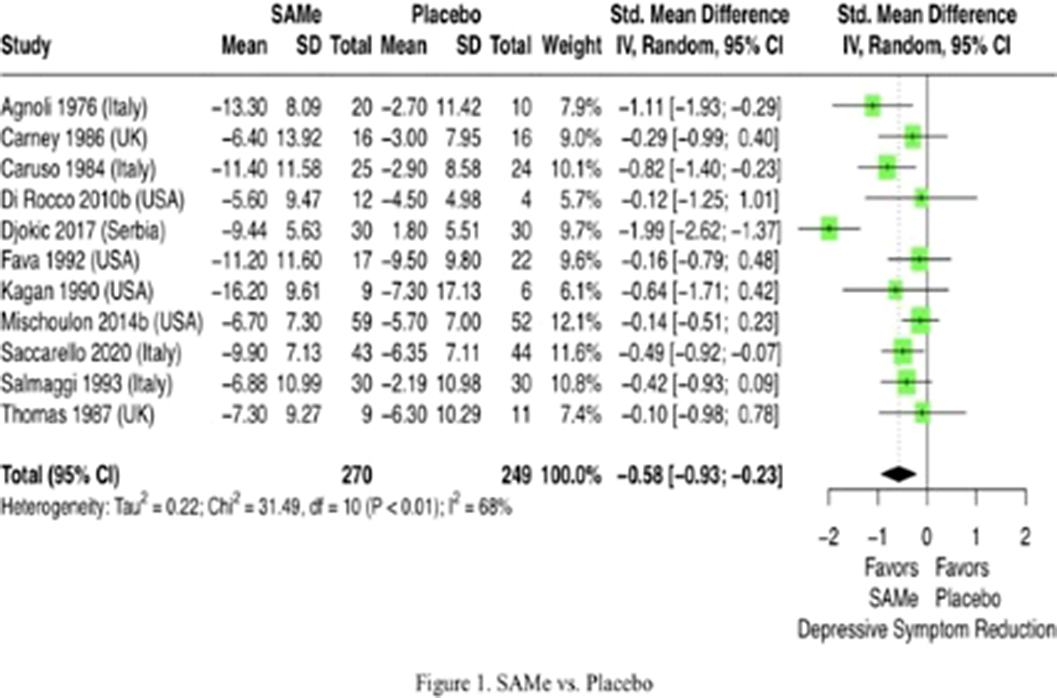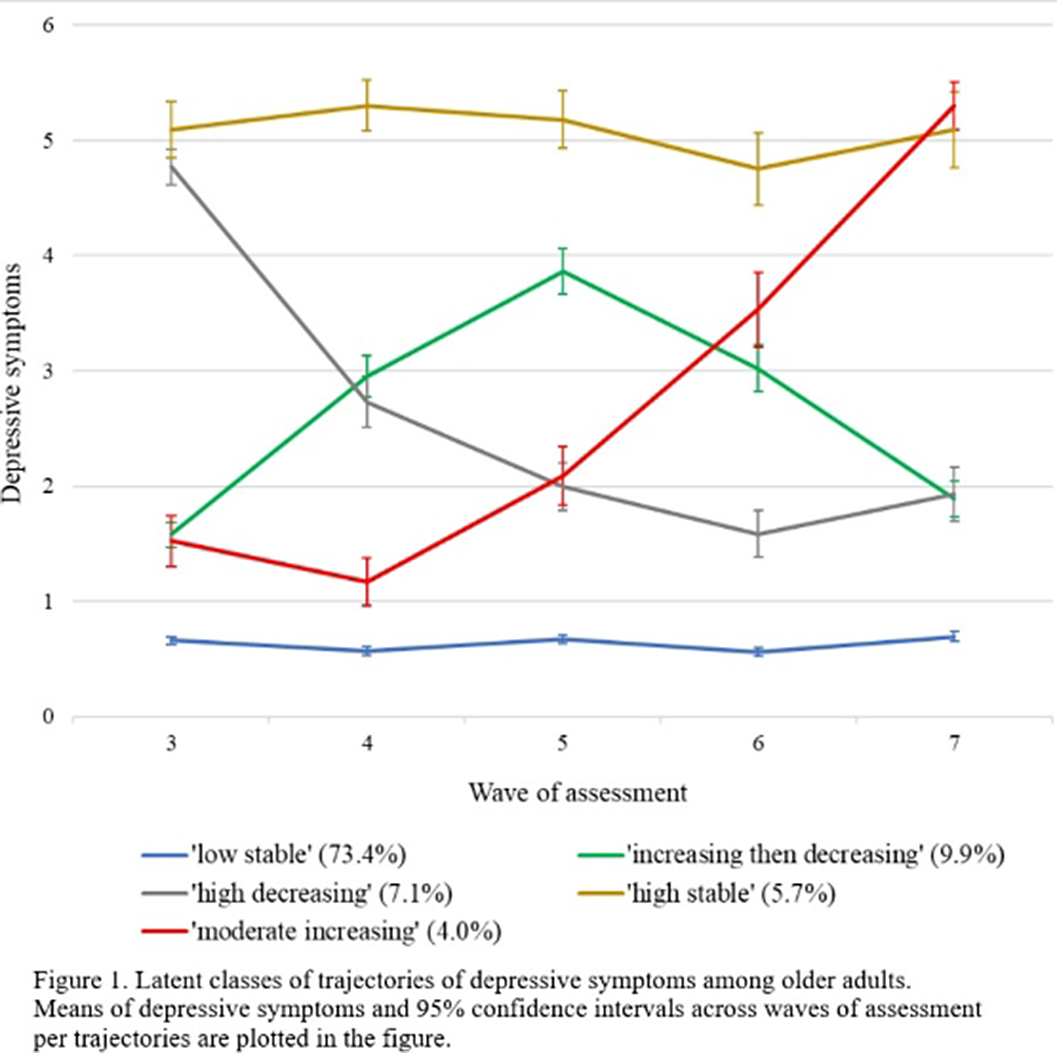Volume 67 - 2024
e-Poster Presentation
Abstract
Long-term safety and frequency of repeat zuranolone treatment in patients with major depressive disorder rolling over from the randomised CORAL Study into the open-label SHORELINE Study
-
- Published online by Cambridge University Press:
- 27 August 2024, pp. S327-S328
-
- Article
-
- You have access
- Open access
- Export citation
Exploring the impact of religiosity and spirituality on depressive symptoms in homeless people
-
- Published online by Cambridge University Press:
- 27 August 2024, p. S328
-
- Article
-
- You have access
- Open access
- Export citation
Efficacy and acceptability of S-adenosyl-L-methionine (SAMe) for depressed patients: a systematic review and meta-analysis of randomized controlled trials
-
- Published online by Cambridge University Press:
- 27 August 2024, pp. S328-S329
-
- Article
-
- You have access
- Open access
- Export citation
Surveillance and monitoring program of child neurodevelopment in population born during social confinement due to covid contigence: monteria-colombia experience
-
- Published online by Cambridge University Press:
- 27 August 2024, p. S329
-
- Article
-
- You have access
- Open access
- Export citation
Psychological distress and coping strategies of hospital nurses during covid-19 pandemic in Greece
-
- Published online by Cambridge University Press:
- 27 August 2024, pp. S329-S330
-
- Article
-
- You have access
- Open access
- Export citation
Covid-19 pandemic and mental health among adolescents and young adults: results from two studies conducted in North of Italy
-
- Published online by Cambridge University Press:
- 27 August 2024, p. S330
-
- Article
-
- You have access
- Open access
- Export citation
Impact of the COVID-19 pandemic on the manifestation and course of mental illness in elderly
-
- Published online by Cambridge University Press:
- 27 August 2024, pp. S330-S331
-
- Article
-
- You have access
- Open access
- Export citation
Youth mental health resilience during the COVID-19 pandemic: A critical review
-
- Published online by Cambridge University Press:
- 27 August 2024, p. S331
-
- Article
-
- You have access
- Open access
- Export citation
Comparing IM Lorazepam and IM Clothiapine for Agitated Psychosis in Hospitalized Patients
-
- Published online by Cambridge University Press:
- 27 August 2024, pp. S331-S332
-
- Article
-
- You have access
- Open access
- Export citation
Euthanasia - A Novel Intricacy for Psychiatry’s Purview?
-
- Published online by Cambridge University Press:
- 27 August 2024, p. S332
-
- Article
-
- You have access
- Open access
- Export citation
Mental health assessment during the full-scale invasion within the general Ukrainian population: state, beliefs and behaviors, query to change (cross-sectional study)
-
- Published online by Cambridge University Press:
- 27 August 2024, pp. S332-S333
-
- Article
-
- You have access
- Open access
- Export citation
Stigmatizing attitudes of doctors, practicing psychiatry in Slovenia; Eustigma study results
-
- Published online by Cambridge University Press:
- 27 August 2024, p. S333
-
- Article
-
- You have access
- Open access
- Export citation
Adverse childhood experiences and 8-year trajectories of depressive symptoms in community-dwelling older adults: Results from the English Longitudinal Study of Ageing
-
- Published online by Cambridge University Press:
- 27 August 2024, pp. S333-S334
-
- Article
-
- You have access
- Open access
- Export citation
Chronic and transient loneliness in western countries: risk factors and association with depression. A follow-up study.
-
- Published online by Cambridge University Press:
- 27 August 2024, p. S334
-
- Article
-
- You have access
- Open access
- Export citation
Social determinants of involuntary psychiatric hospital admissions in Ontario, Canada
-
- Published online by Cambridge University Press:
- 27 August 2024, p. S335
-
- Article
-
- You have access
- Open access
- Export citation
Comparison of Val66met Polymorphism of BDNF gene in patients of bipolar disorder and healthy controls.
-
- Published online by Cambridge University Press:
- 27 August 2024, pp. S335-S336
-
- Article
-
- You have access
- Open access
- Export citation
Pharmacogenomics in Psychiatry: An Asian Perspective
-
- Published online by Cambridge University Press:
- 27 August 2024, p. S336
-
- Article
-
- You have access
- Open access
- Export citation
GWAS in interaction with childhood traumas implicates novel variants and genes previously associated with suicide-related factors in the background of suicidal ideation
-
- Published online by Cambridge University Press:
- 27 August 2024, pp. S336-S337
-
- Article
-
- You have access
- Open access
- Export citation
Can compassion impact us on a cellular level? Preliminary findings on the effects of a compassion focused intervention on immunological markers and CTRA gene expression
-
- Published online by Cambridge University Press:
- 27 August 2024, p. S337
-
- Article
-
- You have access
- Open access
- Export citation
ASCL1 dysfunction contributes to the pathogenesis of schizophrenia by regulating genes associated with neuronal signature formation and neuroplasticity
-
- Published online by Cambridge University Press:
- 27 August 2024, pp. S337-S338
-
- Article
-
- You have access
- Open access
- Export citation


